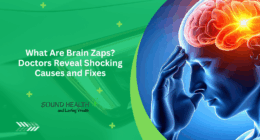
Migraine is one of the most common excuses people use when they can’t attend a meeting or miss a class for students. In fact, it is an overused excuse next to insomniac.
But this kind of headache is not a joke. It is necessary to find out the essential information about migraines so that when the time comes that the excuse becomes true you will not freak out of what you are feeling.
What is Migraine?
Migraine is the kind of headache that occurs repeatedly. There is an estimated 11 individuals who get migraines in 100 people. A person with this condition experiences excruciating pain on one portion or side of the person’s head.
Migraine is classified according to the occurrence of aura and otherwise. Aura is a range of neurological disturbances such as visual irregularity. This serves as a sign that migraine is yet to occur.
A person may experience vertigo, numbness which last approximately 20 minutes or less. This type is also called classic migraine that includes symptoms such as weakness of leg or arm, itching hands or face, and confusion.
A common type of migraine does not occur with an aura. Some individuals only experience preceding symptoms such as mental confusion, mood swings, fatigue, and others. This type lasts for a maximum of 4 days.
Speaking of visual irregularity, one type of this ailment is the ocular migraine which may result in vision loss or difficulty. But do not worry because its symptoms only last a while and don’t pose harm to the eye only that it affects your daily lifestyle.
Symptoms
You can have a mix of the symptoms, the common ones include:
- Severe headache,
- One-sided headache
- Frontal headache,
- Nausea
- Vomiting
- Weakness
- Light, sound and smell sensitivity
- Throbbing headache,
- Eye pain
- Feeling very warm or cold
- Pale skin
- Loss of appetite
- Fatigue
- Dizziness
- Blurred vision
- Diarrhea
- Stomach upset and belly pain
- Sensitivity to light, noise, and smells
- A feverish feeling which is usually rare.
Most migraine headaches last about 4 hours, but severe ones can go for more than 3 days. How often they happen differs for everyone, but it’s common to get two to four headaches per month. Some people may get migraine headaches every few days, while others get them once or twice a year.
What are the triggering factors?
Migraine can be triggered by many factors but all of these do not yet have scientific explanations. It includes allergic reactions, perfume odors, stress, irregular sleep patterns, meal skipping, alcohol, caffeine, pills intake, headaches due to tension, foods with tyramine, chocolate, peanut butter, banana, dairy products, and many more.
There are also drugs that can trigger it. These include nitrates, theophylline, reserpine, nifedipine, indomethacin, and cimetidine. So watch out for these if you know that you have the tendency to have a migraine.
You can also read about Migraine types and effective treatment










